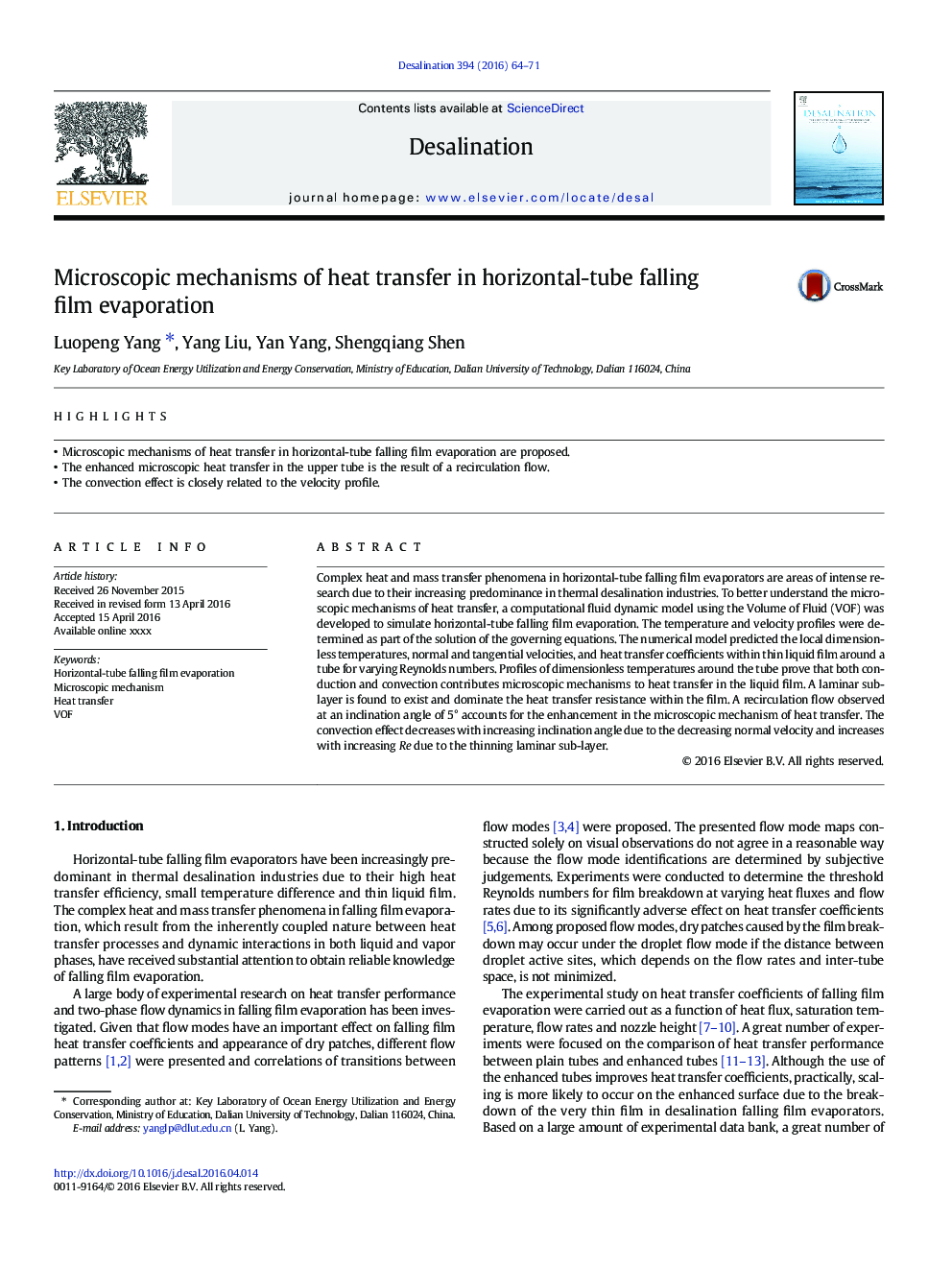| Article ID | Journal | Published Year | Pages | File Type |
|---|---|---|---|---|
| 622743 | Desalination | 2016 | 8 Pages |
Abstract
Complex heat and mass transfer phenomena in horizontal-tube falling film evaporators are areas of intense research due to their increasing predominance in thermal desalination industries. To better understand the microscopic mechanisms of heat transfer, a computational fluid dynamic model using the Volume of Fluid (VOF) was developed to simulate horizontal-tube falling film evaporation. The temperature and velocity profiles were determined as part of the solution of the governing equations. The numerical model predicted the local dimensionless temperatures, normal and tangential velocities, and heat transfer coefficients within thin liquid film around a tube for varying Reynolds numbers. Profiles of dimensionless temperatures around the tube prove that both conduction and convection contributes microscopic mechanisms to heat transfer in the liquid film. A laminar sub-layer is found to exist and dominate the heat transfer resistance within the film. A recirculation flow observed at an inclination angle of 5° accounts for the enhancement in the microscopic mechanism of heat transfer. The convection effect decreases with increasing inclination angle due to the decreasing normal velocity and increases with increasing Re due to the thinning laminar sub-layer.
Related Topics
Physical Sciences and Engineering
Chemical Engineering
Filtration and Separation
Authors
Luopeng Yang, Yang Liu, Yan Yang, Shengqiang Shen,
